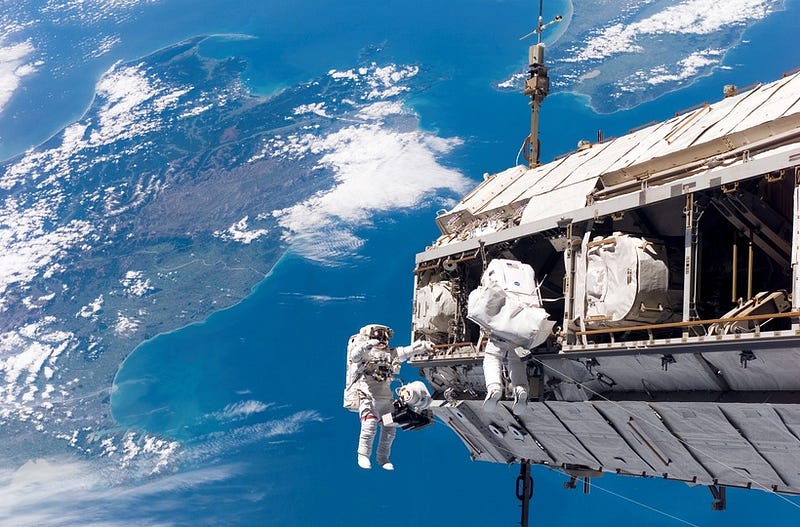
This article was originally posted on Huffingtonpost.com
Back in 2012, the launch of the first private spacecraft bound for the international space station brought earthlings into a new era of space exploration. Now, it seems like new space-related startups are launching (metaphorically-speaking) every day. Along with companies such as Planetary Resources and Deep Space Industries, well-known Silicon Valley figures like Elon Musk and Mark Zuckerberg have backed space-related ventures, regarding these projects as exciting new frontiers that could yield tremendous profits.
It’s likely that the market for private interests in outer space will only expand in the coming decades. Space technology investors have the rare opportunity to establish major footholds in a commercial space industry that is still in its infancy. From grand plans to mine asteroids to chartered rocket trips to Mars, a growing number of space-related ventures are hoping to gain an early foothold in the markets beyond earth.
With so much excitement surrounding recent projects financed by Silicon Valley venture capital, some people have begun to wonder: is it too early to invest in commercial aerospace ventures? While bumps and bruises are par for the course for young tech startups, the rapidly evolving business of outer space presents a different class of obstacles than typical start-ups and on a much grander scale.
Outer space has emerged as a new investment frontier and despite the risks of its landscape, the temptation of a virgin market is luring more early-stage investors.
The desire to lower “the price of admission into space” is what originally motivated Amazon CEO Jeff Bezos to create his rocket company Blue Origin 16 years ago. Bezos hopes that his massive wealth will be used to finance the development of foundational infrastructure in space, and thereby pave the way for more space-related ventures in the not so far off future.
Along with Bezos, Elon Musk’s SpaceX and Richard Branson’s Virgin Galacticare part of a growing cohort developing new space vehicles, Ben Fox Rubin writes in an article for CNET. But despite the fortunes that the Silicon Valley billionaires are pouring into their commercial projects, Rubin believes “it will still take years of investments to make space exploration into something that more of the public can experience — or invest in.”
Is he right? Is it too early for the average investor to get behind space-related ventures?
American national security interests were the main drivers of aerospace policy and investment in the U.S. during the 20th century (this was especially true with NASA’s Apollo missions), though that investing landscape seems to have shifted. In addition to declining launch costs, cheaper and lighter payload satellites are accelerating commercial development in space.
The up-front costs are still usually tremendous; the returns uncertain. Of course, there are easier — and less risky paths — to earn sizeable returns. For the average investor, large cost isn’t the biggest barrier to entry. For investors to infuse capital in commercial space ventures, to really get the public on board, more incentives need to be in place than there currently are.
The problem, as I see it, is that private aerospace projects currently face critical obstacles that work to discourage further investment. Given the current status of international law governing outer space, little protection for investors exists. Legal uncertainties, coupled with energy and fuel costs, will hinder private investment in space unless investors are further incentivized.
The Treaty on Principles Governing the Activities of States in the Exploration and Use of Outer Space, including the Moon and Other Celestial Bodies, also known as “The Outer Space Treaty,” was established in 1967 and still forms the basis of international space law. Among other things, the Treaty specifies that no state can launch a weapon of mass destruction into orbit, or lay claim over any celestial resource. With no additional legislation, how can a company establish an asteroid mining claim? How can anyone own a piece — or all — of a celestial body?
On the other hand, who became rich during the California gold rush? Not the prospectors, and not the forty-niners. The men and women who prospered ignored the temptation of gold in favor of another opportunity. Men like Sam Brannan profited by selling shovels to the hundreds of thousands of people who traveled to the Sierra Nevada foothills hoping to strike it rich in the early 1850s. A Bavarian immigrant named Levi Strauss made a fortune, too, albeit not from gold. Strauss, you probably know, did okay for himself by selling dry goods and outfitting California miners with pants that were hardy enough to withstand the grueling work underground.
For investors who can’t resist getting in on the intergalactic action, I see an opportunity to make small investments in blue-chip companies which produce components and technologies used in space travel. For instance, aviation companies like General Dynamics and the tech provider Honeywell should benefit from growing private interest in space exploration.
Investors who understand that this time around, the space race isn’t pitting one country against another so much as it is one enterprise against another, will be well-positioned to profit. Beyond those providing the “shovels and pickaxes,” the truly new industries and companies which have begun to emerge really excite me. Saber Aeronautics is particularly fascinating; they are using video game-esque technology and virtual reality to help train people for missions. Companies such as Made in Space are creating innovative models for construction in space to lower mission costs, while Bessemer-backed Rocketlab is doing the same for low cost launch vehicles. As the space market grows, I believe an investor’s best bet will be in companies that provide these critical components of the outer space supply chain.
I am also hopeful that renewed interest in outer space and the excitement surrounding space exploration will provide a much-needed boost to science in the United States. And in the meantime, we can always marvel at the high-resolution images of the universe which surrounds us.
